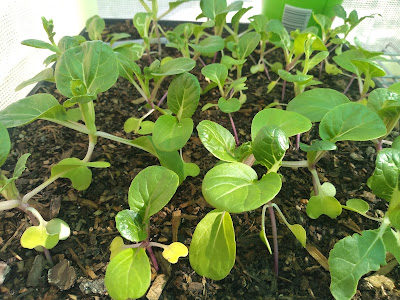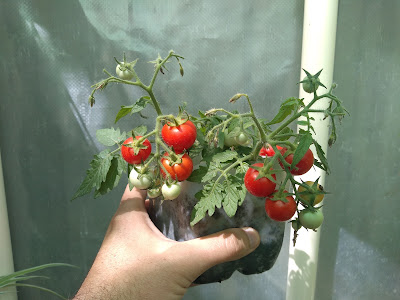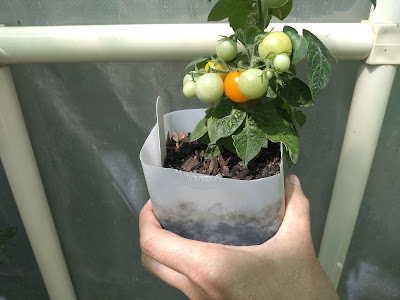Years ago (somewhere around 2009 or 2010) we got a worm farm. From memory it was either a 'worm cafe' or 'worm factory'.
We also bought some compost worms locally, put them in, and it worked great. Eventually we moved house, we moved to acreage somewhere semi arid and far too hot. I lost all the worms and didn't get any more to replace them.
I have had this worm farm sitting empty ever since then. It has moved house with us a few times.
 |
| My worm farm |
I have some raised garden beds that I use for my vegetable garden. The first few years they worked really well. There is much less digging, less weeds, and they are much better on my back than non-raised garden beds. Recently we have had a lot of trouble with rabbits, they don't get up into the raised beds, they only eat things growing at ground level. I like my raised vegetable garden beds.
The soil level in the raised garden beds started getting a little low, so I bought a 5 cubic meter load of soil to top them up. This soil is dreadful. It compacts hard like a rock when dry, when watered it is a gluggy mess, and my vegetables show signs of nutrient deficiency. This soil needs to be fixed.
I have a compost tumbler, I plan to mix the compost through the soil when it is ready. We have chickens, I will dig some of their manure through the soil. This will help.
We also have a lot of leaves up the side of the garage that my daughter kept raking into a large pile. I considered digging this through the soil, then remembered the worm farm. The worm farm may be a faster way of breaking down the leaf litter making the nutrients available to my plants. The worm farm also has a little tap, any liquid that drips out of there tends to be good for the soil.
I looked around and discovered very few people sell compost worms locally, most of which were selling for really high prices. Some hardware stores sell them, as do online shops, but their prices are too high and (based on many bad reviews that I read) I may not actually get what I paid for. I eventually bit the bullet and bought 1,000 compost worms from someone local.
I put 1,000 worms into my worm farm filled with leaf littler on 05/03/2023. I took the photo below days after, you have to look pretty close to see any worms. They should increase in number from here pretty fast. I looked yesterday and there are noticeably more worms in there - meaning they are growing.
 |
| Not many worms early on |
 |
| Not the ideal set up, but it should work |
At the moment the worms are living in leaf litter. There is a small amount of vegetable scraps in there, and some tea bags and things, but it is mostly leaf litter that is already broken down various amounts. Some leaves are new, others are already so broken down that they look like soil. I added a small handful of guinea pig manure and some chicken food that had been spilled, this should help the worms grow faster. I would also like to add the bedding from our guinea pig house when there are enough worms to eat it.
The leaf litter has become noticeably lower in the pot, so I assume the worms are eating it. I have added a second tray of leaf litter to the worm farm as the first one has been mostly turned into castings. This is all very positive. I don't think I will empty the first tray yet. Winter is just around the corner and having two trays on the worm farm should help to buffer the temperature swings a little due to increased thermal mass.
The worms should grow and breed between now and winter, from there I don't expect them to do much until spring. That's ok. The worm farm and the pot are both protected from the frosts so I expect the worms to survive winter.
Over winter they won't eat a lot or breed much, but each worm will grow and the baby ones should mature over this time. Come spring, the worms should all be large enough to breed and ready for their population to explode with the warmer weather.
















































